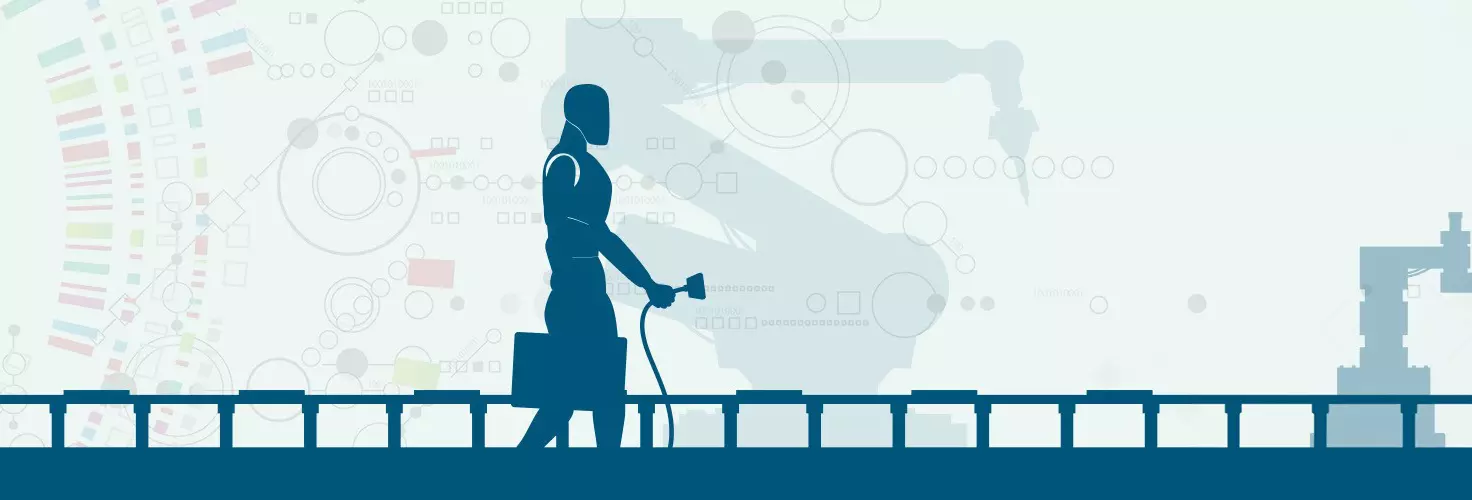The ‘All’ makes the difference

The term ‘All Electric Society’ is already firmly established. However, its actual realisation is still a long way off. In this interview, Andreas Huhmann, Strategy Consultant, and Stephan Middelkamp, General Manager for Quality and Technologies at HARTING, explain what it will take.

Dr Stephan Middelkamp
Position: General Manager Quality & Technologies
- Department: SSU QT
- Company: HARTING Stiftung & Co. KG

Andreas Huhmann
Position: Strategy Consultant
- Department: C+N Strategy
- Company: HARTING Stiftung & Co. KG
Slow progress at the All Electric Society
tec.news: The All Electric Society is not a new topic. In fact, we've been talking about it for several years now. Nevertheless, there is a feeling that things are not really progressing. Is this feeling correct and if so, why is that?
Andreas Huhmann (AH): We should not see the All Electric Society as a mere vision, but rather as a statement that is already present in many aspects of our everyday lives. Many processes in our society and also in our working lives are strongly characterised by electricity. This means that we have already taken some steps in the right direction. However, we still lack the comprehensive integration of all the technological advances and systems that would be necessary to truly realise the All Electric Society. We live in a time in which the technical possibilities exist to make significant progress. But the key that we are missing is the clear strategy of how we can connect these different systems and processes to achieve the true benefits for our sustainability and society. So we are already living in an Electric Society and still need to take the final steps towards an All Electric Society.
Differences between the All Electric Society and Electric Society
To understand this a little better: What distinguishes the All Electric Society from the Electric Society we live in today?
AH: Yes, we are indeed already living in an electric society in which electricity is used for a variety of applications every day. This is significant progress that we should not underestimate. But of course, there are still a few important steps missing towards an all-electric society. This society should not only include the use of electricity, but also the full integration of all stakeholders - both consumers and producers. The difference lies in the way these players interact with each other and create a dynamic, intelligent system.
If we want to achieve the All Electric Society, we need to optimise the interaction between the various systems so that we can work more efficiently and sustainably.

Andreas Huhmann
Strategy Consultant
It's not just about making electricity available, but about utilising it in such a way that everyone involved can benefit to the maximum.
The challenges
What are the biggest challenges that still lie ahead of us on this journey?
Stephan Middelkamp (SM): It starts with the fact that change is needed in diversified sectors such as energy production, the automotive industry and other areas in order to ultimately realise the All Electric Society. These sectors face specific problems that are often deeply rooted in their existing structures. We currently have to work on several fronts simultaneously: driving technological innovation, gaining consumer acceptance and promoting price reductions in the renewable sector. The key will be to recognise and accept that such change is often not painless.
The path is not easy, every step has to be small and we need patience to make real progress.

Dr Stephan Middelkamp
General Manager Quality & Technologies
Sector coupling
One term that comes up time and again in this context is sector coupling. What exactly does this mean?
SM: Fundamentally, it's about connecting different sectors - let's take energy, industry or transport, for example - more closely. When we talk about sector coupling, it is important to understand that many sectors traditionally work in isolation and are often unwilling to cooperate beyond their own borders. This isolation means that we have to overcome major hurdles in the area of standards and interoperability. At present, there are many sector-specific standards that hinder this cooperation. In order to actually achieve sector coupling, it will be crucial that we electrify and interconnect the existing sectors. This means that we need to adapt the infrastructure and existing technologies so that they can offer practicable solutions and be integrated in the shortest possible time. Without such integration, progress will be very limited.
HARTING's role
What role can HARTING's ideas and products play in this endeavour?
AH: At HARTING, we see our technologies as one of the keys to cross-sector applications. It is important that we not only optimise our products for a specific sector, but also think beyond it. A key example is the use of technologies from the data centre sector, which we can also apply in other, perhaps less obvious sectors. By transferring these technologies, we can achieve significant efficiency gains in energy transmission. So by working closely between the sectors and utilising synergies, we can not only advance the All Electric Society, but also show how much potential there is in this integration. If we are able to develop the 360-degree view, it will not only help our company, but it will also be of great benefit to society as a whole.
Essential standards
If you consider all of this, you can't help but think about the topic of standardisation. It feels like standards are loved as much as they are hated. But aren't they indispensable in this case?
SM: Absoult! I think a certain degree of standardisation is essential if we want to achieve more effective collaboration in the All Electric Society. But, as the question suggests, we should be careful, as excessive standardisation can also limit the ability to innovate. It is therefore of the utmost importance to find a balance. Standardisation must be designed in such a way that it benefits companies and their products without them losing flexibility and individuality. The standards should not only fulfil the technical requirements, but also ensure that every manufacturer has the freedom to develop innovative solutions. This will allow us to design robust and future-proof systems that are tailored to the specific needs of the applications. Ultimately, standardisation must therefore offer both a long-term vision and practical applicability.
Depending on the individual case
So in the end it depends on the individual case?
SM: Yes, as in so many other cases, you have to judge what is best in each individual case. Basically, the proportion of equalisation will increase overall. Let's take the energy sector as an example. Here, the layout of a connector can be designed in such a way that it is as ideal as possible for the few relevant voltage classes. Standardisation then also makes sense.
AH: And where it is possible, standardisation naturally helps with scaling. It's also about being able to use components and devices internationally as easily as possible. And that is much easier with standardised connections.

Lars Kühme
Position: External Communication
- Department: Corporate Communication & Branding
- Company: HARTING Stiftung & Co. KG


